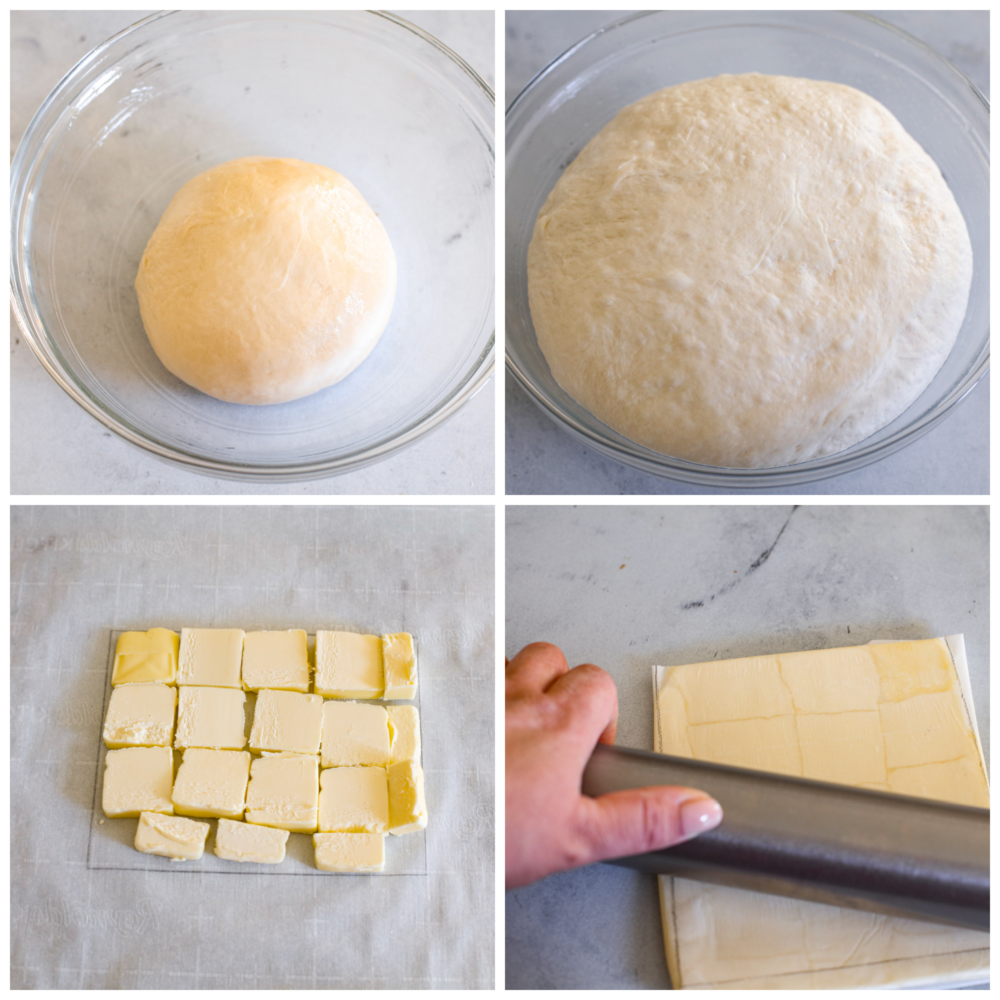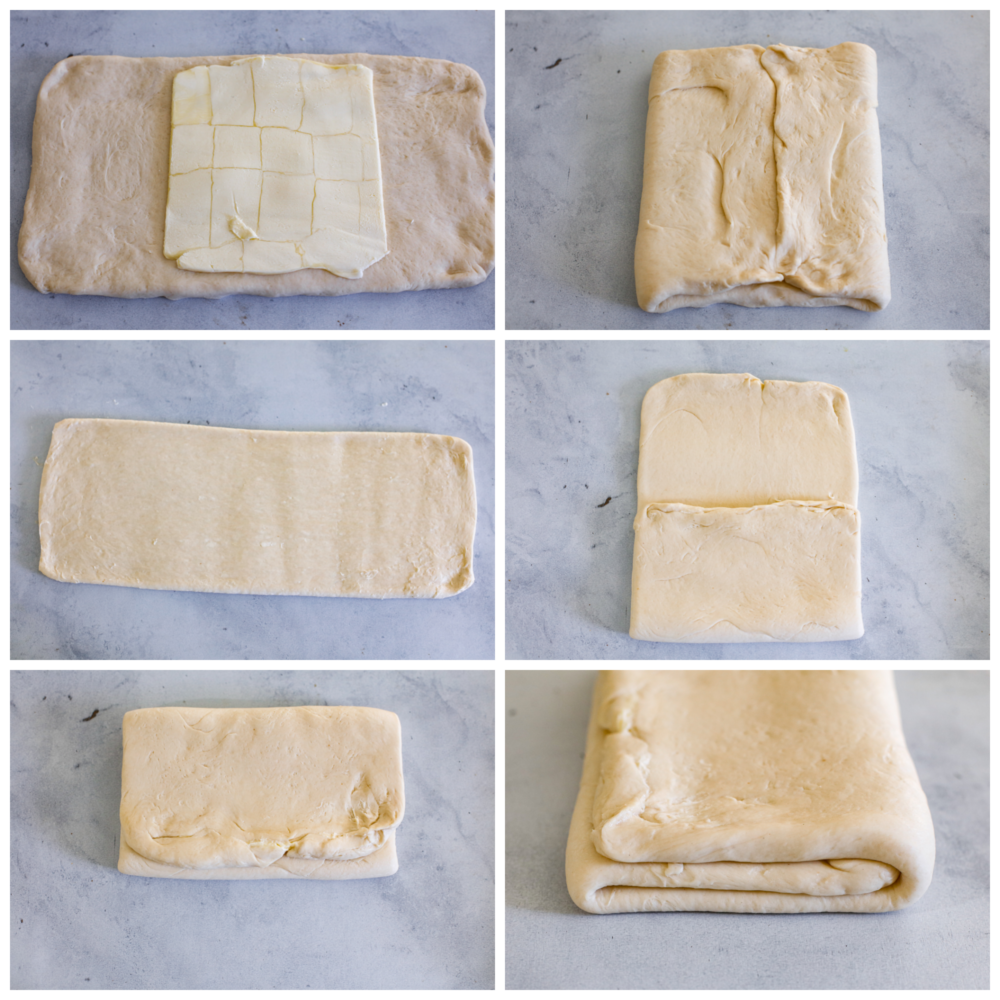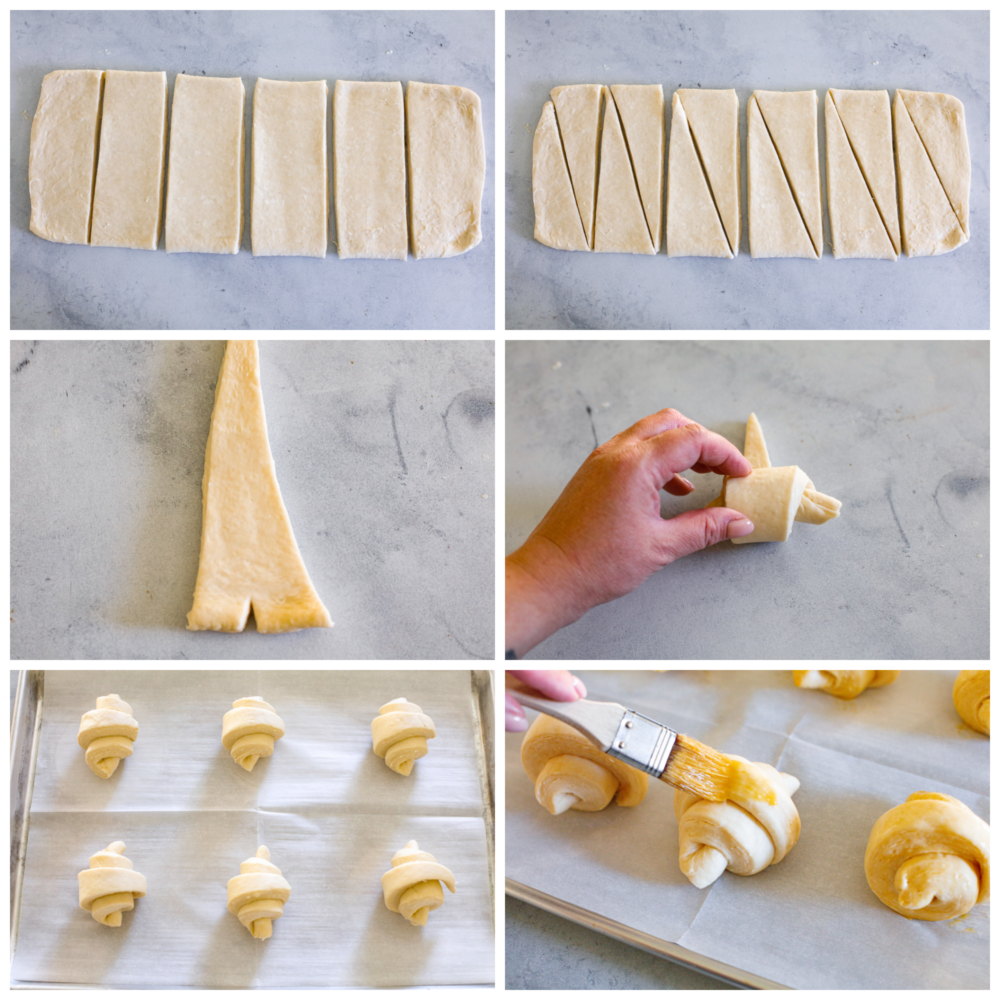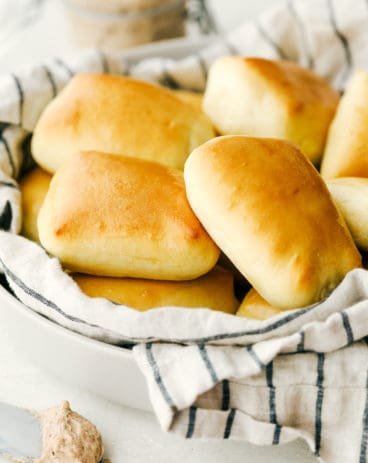These homemade croissants are a classic French pastry with beautiful flakey tender layers. This labor of love is soft and fluffy on the inside with a buttery flakey crust on the outside. My favorite part about croissants besides the delicious flavor and texture is that they are so versatile. If you don’t devour them right away, croissants are great to use in many different recipes. Serve with chicken salad sandwiches, use in this Monte Cristo recipe, or in desserts like this bread pudding.
What are Homemade Croissants?
Croissants originated in Austrian and French bakeries and are known for the tender soft layers on the inside. The incredible flavor comes from the dough that has been laminated with butter in multiple layers. The crisp golden outer layer lightly crumbles and simultaneously melts in your mouth! Nothing beats fresh homemade croissants, and that is why I am so excited for you to make them! My family loves to each these for breakfast, lunch, and dinner! Serve them at your next brunch with this breakfast casserole, and my amazing air fryer bacon and poppyseed fruit salad!
Ingredients for Homemade Croissants
All you need to make homemade croissants are simple everyday ingredients. I love how easy it is to gather all the ingredients and plan for these amazing French rolls. You are definitely going to want to make these very soon!
Milk: Any milk works, but I prefer 2% or whole milk.Instant Yeast: All you need is one packet of instant yeast.Granulated Sugar: Just a small amount adds a touch of sweetness.Salt: Enhances all the flavors.All-Purpose Flour: All-purpose flour produces great rolls.Unsalted Butter: Unsalted is best in this recipe.Egg: One whole egg is all you need.Milk: Mix a little milk with the egg for the egg wash.
How to Make Homemade Croissants
Making these pastries can be intimidating, but I walk you through the process step by step. My instructions and pictures below are so helpful because I wanted you to have detailed help along the way. Follow the recipe card and tips below for everything you need to know before making this recipe.
Prepare the Dough
Laminate the Dough
Form and Bake the Croissants
Don’t Overheat the Milk: Be sure not to overheat the milk when adding the yeast. If the milk is too hot it can kill the yeast and prevent the dough from rising.Don’t Over-Chill the Butter: Don’t over-chill the butter block! If it is chilled for more than 30 minutes, the butter won’t be pliable enough to spread as the dough is rolled out. If you end up chilling it longer than 30 minutes, pull it out and let it sit at room temperature for 15 minutes before continuing.Room Temperature Can Vary: If your kitchen is extra warm while the croissants are proofing, the process may be faster than 2-2 ½ hours and you will want to make sure no butter is melting out the sides of your croissants. If the kitchen is on the cooler side, proofing may take a little longer but they will get there!
Making the Perfect Dough:
Make Sure the Dough is Chilled: If at any point you find the dough is shrinking and not holding its shape when you’re rolling it, wrap it up and let it rest in the fridge for 30 minutes. Shrinking indicates the dough is being overworked and needs time to rest before being worked again.Square the Dough: Keep the dough as square as possible. The more rounded it becomes during the lamination process, the more uneven it will be. Flour to Prevent Sticking: As the lamination process progresses, spots of dough may bubble and expose the butter beneath. Simply dust with flour to prevent sticking and continue with the process.
On the Counter: Store baked croissants in an airtight container for 3-4 days, though they are best when eaten the day they are baked.In the Freezer: They can be frozen when the dough has been formed into croissants but has not yet been proofed. Cover with plastic wrap and freeze for 2 hours before removing from the baking sheet. Place croissants in a freezer plastic bag then seal tightly. Bake Thawed Croissants: When ready to bake, remove from the freezer and place on a parchment-lined baking sheet. Cover and let sit at room temperature for 4-5 hours, so they thaw and proof. Continue with the baking instructions from step 5 of the baking process.
Parker House Rolls
1-Hour Rolls
Copycat Texas Roadhouse Rolls
30 minute Asiago Cheese Rolls
All nutritional information is based on third party calculations and is only an estimate. Each recipe and nutritional value will vary depending on the brands you use, measuring methods and portion sizes per household.
The Best Homemade Alfredo Sauce Recipe Ever!
Insanely Delicious Prime Rib Recipe
Lemon Garlic Parmesan Shrimp Pasta











